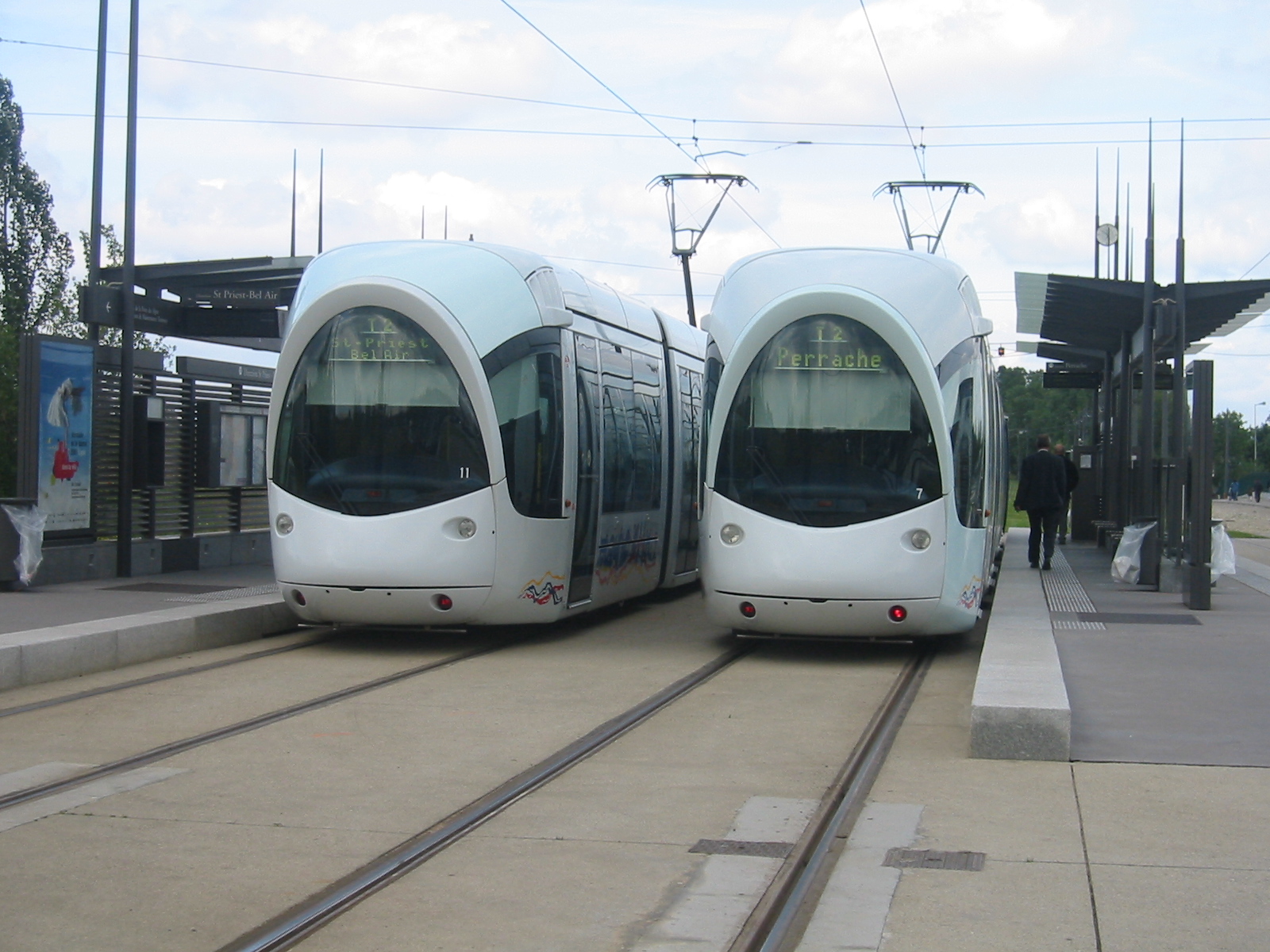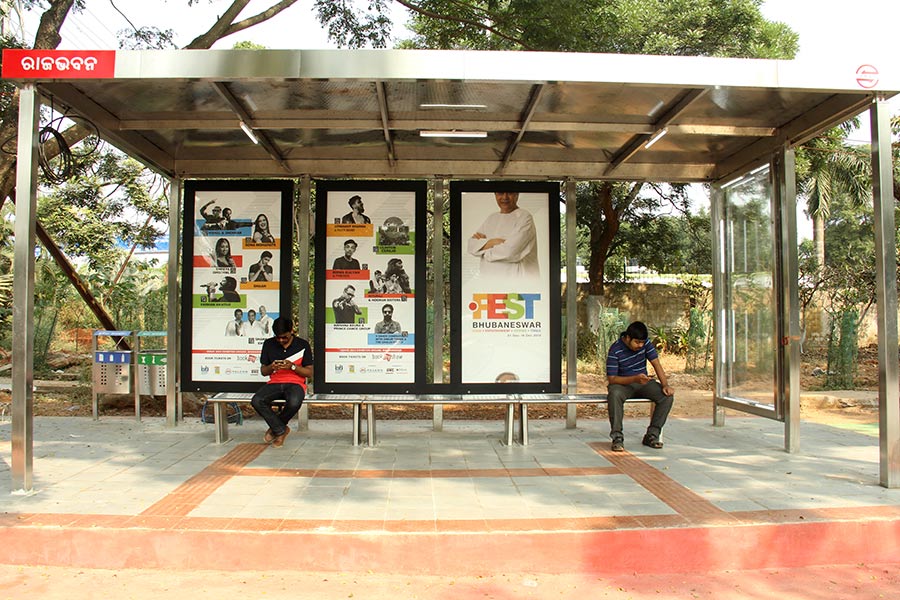|
Funairi-hon-machi Station
Funairi-hon-machi is a Hiroden tram stop, station on the Hiroden Eba Line located in Funairi-hon-machi, Naka-ku, Hiroshima, Naka-ku, Hiroshima. It is operated by the Hiroshima Electric Railway. Routes There are three routes that serve Funairi-hon-machi Station: * Hiroshima Station - Eba Route * Yokogawa Station - Eba Route * Hiroden Streetcar Route 9, Hakushima - Eba Route Station layout The station consists of two staggered side platforms serving two tracks. Crosswalks connect the platforms with the sidewalk. There is a shelter located in the middle of each platform. Adjacent stations Bus connections *Hiroden Bus Route #6 at "Funairi-hon-machi" bus stop Surrounding area *Funairi-hon-machi Syoutengai *Municipal Kanzaki Elementary School *Hiroshima Prefectural Medical Association History *Opened on December 28, 1943. See also *Hiroden Streetcar Lines and Routes References {{DEFAULTSORT:Hiroden Funairi-Hon-Machi Station Hiroden Eba Line stations, Funairi-hon-ma ... [...More Info...] [...Related Items...] OR: [Wikipedia] [Google] [Baidu] |
Naka-ku, Hiroshima
is the heart of Hiroshima, Hiroshima Prefecture, Japan. Naka-ku is home to Hiroshima's central business district and Peace Memorial Park. Major attractions include the Hondori shopping arcade, a covered mall-like street of shops extending east from the Hiroshima Peace Memorial Park to Hatchobori. Also in Naka-ku is Okonomi-mura - a building housing a number of restaurants that serve Hiroshima's famous food, okonomiyaki. Geography This place is in the middle of River delta of Ōta River. It's almost flat except around Mt. Eba or Mt.Eba-sarayama. Nature * Ōta River Neighbors *North: East Ward *South: Hiroshima Bay *East: South Ward *West:West Ward Economy Air China Air China Limited () is the flag carrier of the People's Republic of China and one of the "Big Three" mainland Chinese airlines (alongside China Southern Airlines and China Eastern Airlines). Air China's headquarters are in Shunyi District, ... has an office on the 11th floor of the NBF Hiroshima T ... [...More Info...] [...Related Items...] OR: [Wikipedia] [Google] [Baidu] |
Hiroshima
is the capital of Hiroshima Prefecture in Japan. , the city had an estimated population of 1,199,391. The gross domestic product (GDP) in Greater Hiroshima, Hiroshima Urban Employment Area, was US$61.3 billion as of 2010. Kazumi Matsui has been the city's mayor since April 2011. Hiroshima was founded in 1589 as a castle town on the Ōta River delta. Following the Meiji Restoration in 1868, Hiroshima rapidly transformed into a major urban center and industrial hub. In 1889, Hiroshima officially gained city status. The city was a center of military activities during the imperial era, playing significant roles such as in the First Sino-Japanese War, the Russo-Japanese War, and the two world wars. Hiroshima was the first military target of a nuclear weapon in human history. This occurred on August 6, 1945, at 8:15 a.m., when the United States Army Air Forces (USAAF) dropped the atomic bomb " Little Boy" on the city. Most of Hiroshima was destroyed, and by the end ... [...More Info...] [...Related Items...] OR: [Wikipedia] [Google] [Baidu] |
Japan
Japan ( ja, 日本, or , and formally , ''Nihonkoku'') is an island country in East Asia. It is situated in the northwest Pacific Ocean, and is bordered on the west by the Sea of Japan, while extending from the Sea of Okhotsk in the north toward the East China Sea, Philippine Sea, and Taiwan in the south. Japan is a part of the Ring of Fire, and spans an archipelago of 6852 islands covering ; the five main islands are Hokkaido, Honshu (the "mainland"), Shikoku, Kyushu, and Okinawa. Tokyo is the nation's capital and largest city, followed by Yokohama, Osaka, Nagoya, Sapporo, Fukuoka, Kobe, and Kyoto. Japan is the eleventh most populous country in the world, as well as one of the most densely populated and urbanized. About three-fourths of the country's terrain is mountainous, concentrating its population of 123.2 million on narrow coastal plains. Japan is divided into 47 administrative prefectures and eight traditional regions. The Greater Tokyo Ar ... [...More Info...] [...Related Items...] OR: [Wikipedia] [Google] [Baidu] |
Hiroden Eba Line
The is a streetcar line of Hiroshima Electric Railway (Hiroden) in Hiroshima, Japan. The line has been operating since 1943. The total distance of the line is . Routes 6, 8, and 9 operate on the line. The line has seven stations, with six of them numbered E1 through E6. The seventh station, Dobashi, is numbered M13, and is the station where the Eba Line merges with the Hiroden Main Line The is a streetcar line of Hiroshima Electric Railway (Hiroden) in Hiroshima, Japan. The line has been operated since 1912. The total distance of the line is . Routes 1, 2, 3, 5, 6, 7 and 8 operate on the line. The line has 20 stations, .... Stations References Eba Line Railway lines opened in 1943 {{Tram-stub ... [...More Info...] [...Related Items...] OR: [Wikipedia] [Google] [Baidu] |
Hiroshima Electric Railway
is a Japanese transportation company established on June 18, 1910, that operates streetcars and buses in and around Hiroshima Prefecture. It is known as for short. The company's rolling stock includes an eclectic range of trams manufactured from across Japan and Europe, earning it the nickname "The Moving Streetcar Museum". From January 2008 the company has accepted PASPY, a smart card ticket system. This is the longest tram network in Japan, with . The atomic bombing of Hiroshima took place on 6 August 1945. 185 employees of the company were killed as a result of the bomb and 108 of its 123 cars were damaged or destroyed. Within three days, the system started running again. Three trams that survived or were rebuilt after the bombing continue to run 75 years afterwards. Railway and streetcar *One Railway line with one route for 16.1 km. ( Miyajima Line) **between Hiroden-nishi-hiroshima Station and Hiroden-miyajima-guchi Station. **trains(trams) link up with oth ... [...More Info...] [...Related Items...] OR: [Wikipedia] [Google] [Baidu] |
Tram Stop
A tram stop, tram station, streetcar stop, or light rail station is a place designated for a tram, streetcar, or light rail vehicle to stop so passengers can board or alight it. Generally, tram stops share most characteristics of bus stops, but because trams operate on rails, they often include railway platforms, especially if stepless entries are provided for accessibility. However, trams may also be used with bus stop type flags and with mid-street pavements as platforms, in street running mode. Examples Most tram or streetcar stops in Melbourne and Toronto and other systems with extensive sections of street-running have no associated platforms, with stops in the middle of the roadway pavement. In most jurisdictions, traffic cannot legally pass a tram or streetcar whose doors are open, unless the tram is behind a safety zone or has a designated platform. On the other hand, several light rail systems have high-platform stops or stations with dedicated platforms at railway ... [...More Info...] [...Related Items...] OR: [Wikipedia] [Google] [Baidu] |
Hiroshima Station - Eba Route
Hiroden Streetcar Route #6 "Hiroshima Station - Eba Route" runs between Hiroshima Station and Eba Station. Overview Lines Hiroden Streetcar route #6 is made up with next two lines. The train goes straight through from each side. * Hiroden Main Line *█ Hiroden Eba Line Stations References 6 {{Tram-stub ... [...More Info...] [...Related Items...] OR: [Wikipedia] [Google] [Baidu] |
Yokogawa Station - Eba Route
Hiroden Streetcar route 8 is a streetcar route operated by the Hiroshima Electric Railway. It runs between Yokogawa Station and Eba Station. Overview Lines Hiroden Streetcar route 8 runs on the Hiroden Yokogawa Line The is a streetcar line of Hiroshima Electric Railway (Hiroden) in Hiroshima, Japan Japan ( ja, 日本, or , and formally , ''Nihonkoku'') is an island country in East Asia. It is situated in the northwest Pacific Ocean, and is bordered ..., Hiroden Main Line, and the Hiroden Eba Line. Stations References 8 {{Tram-stub ... [...More Info...] [...Related Items...] OR: [Wikipedia] [Google] [Baidu] |
Hiroden Streetcar Route 9
Hiroden Streetcar route #9 is a streetcar route operated by the Hiroshima Electric Railway. It runs between Hatchobori Station and Hakushima Station. Around five to six trips per day continue to Eba Station via the Hiroden Main Line and Hiroden Eba Line. Overview Lines Hiroden Streetcar route #9 runs on the Hiroden Hakushima Line. A few trips continue via the Hiroden Main Line The is a streetcar line of Hiroshima Electric Railway (Hiroden) in Hiroshima, Japan. The line has been operated since 1912. The total distance of the line is . Routes 1, 2, 3, 5, 6, 7 and 8 operate on the line. The line has 20 stations, ... and Hiroden Eba Line. Stations References 9 {{Tram-stub ... [...More Info...] [...Related Items...] OR: [Wikipedia] [Google] [Baidu] |
Bus Stop
A bus stop is a place where buses stop for passengers to get on and off the bus. The construction of bus stops tends to reflect the level of usage, where stops at busy locations may have shelters, seating, and possibly electronic passenger information systems; less busy stops may use a simple pole and flag to mark the location. Bus stops are, in some locations, clustered together into transport hubs allowing interchange between routes from nearby stops and with other public transport modes to maximise convenience. Types of service For operational purposes, there are three main kinds of stops: Scheduled stops, at which the bus should stop irrespective of demand; request stops (or flag stop), at which the vehicle will stop only on request; and hail and ride stops, at which a vehicle will stop anywhere along the designated section of road on request. Certain stops may be restricted to "discharge/set-down only" or "pick-up only". Some stops may be designated as "timing poin ... [...More Info...] [...Related Items...] OR: [Wikipedia] [Google] [Baidu] |
Hiroden Streetcar Lines And Routes
This is a list of lines and routes on the Hiroshima Electric Railway's railway and streetcar (tram) systems in and around Hiroshima, Japan. Lines Currently there are seven streetcar lines: Except for the Miyajima Line, they are called the "Inner City Line" and the fare is the same across all lines. Routes There are eight regular streetcar routes running on the lines shown above. These routes are usually identified by numbers. Ticketing system Special tickets Both two-day and one-day tickets are available. * 2-day ticket for Hiroden streetcars, Miyajima Matsudai Kisen ferries to Miyajima, and ropeways for Mt. Misen * 1-day ticket for Hiroden streetcars and ferries * 1-day ticket for Hiroden streetcars * 1-day passport for "no car day" on the 22nd of every month * Paseo card - Prepaid card for Hiroden Streetcar, Astram Line and bus services around Hiroshima * Transfer card: Used when transferring from one line or route to another See also *List of railway lines in J ... [...More Info...] [...Related Items...] OR: [Wikipedia] [Google] [Baidu] |



